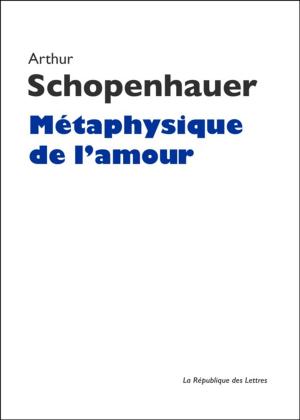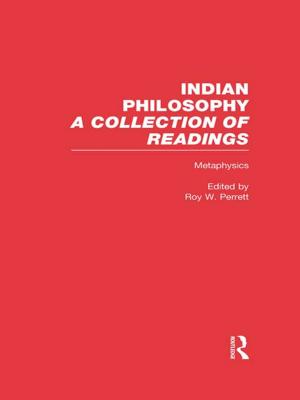The Sage and the Lotus: Mind, Body and the Five Worlds
Nonfiction, Religion & Spirituality, Philosophy, Metaphysics| Author: | Jeremy J Bowler | ISBN: | 9781310117046 |
| Publisher: | Jeremy J Bowler | Publication: | January 14, 2016 |
| Imprint: | Smashwords Edition | Language: | English |
| Author: | Jeremy J Bowler |
| ISBN: | 9781310117046 |
| Publisher: | Jeremy J Bowler |
| Publication: | January 14, 2016 |
| Imprint: | Smashwords Edition |
| Language: | English |
The book presents an holistic understanding of consciousness from the ancient Vedic Tradition of India, based on the teaching of Maharishi Mahesh Yogi, the Sage of the title. The symbolism of the Lotus on the Lake is used to illustrate the connections made between consciousness and matter.
Modern life is very much separated into compartments, and for all our scientific and technological developments, modern culture displays a lack of knowledge of wholeness. To be precise, we have no real understanding of consciousness or of how our minds interact with our bodies, nor of how life as a whole functions to nourish the separate parts.
Consequently many people remain unhappy or unfulfilled and we continue to act collectively in ways that are damaging to life.
The book is in four parts. Part one starts with the polarisation of world views illustrated by science and religion and the difficulty this creates in coming to a shared understanding of reality that encompasses all aspects of human experience. Such human experience covers several interacting domains: the physical; the mental; the social and cultural, and the spiritual.
Science only tells us accurately about the physical. So we have the bizarre situation that scientists, working with their minds in a social and cultural context of shared meaning, cannot explain consciousness. Religion purports to explain the human relationship with the Divine, yet, for many, religion has become a matter of blind belief leading to actions that can sometimes seem destructive to life itself.
The Mind-Body problem is introduced as revealing the fundamental difficulties we face in understanding the wholeness of life. A discussion of this problem and some of the broad approaches to tackling it, via dualism, materialism and idealism, leads naturally into an explanation of Maharishi's teaching.
Part two describes Maharishi Vedic Science as a theory of wholeness which takes consciousness to be primary. The theory is explained in some detail and extended to show how three interacting modes of consciousness are required to create physical forms, worlds of shared experience and the appearance of matter. The three modes are the cosmic mode, the individual mode and the collective mode.
Part Three returns to the Mind-Body problem and shows that it does not exist in Maharishi Vedic Science. The difficulties described in part one are shown to arise only if we take a limited viewpoint from within the main theory, a viewpoint in which wholeness is missing. Mind and body go together, but they are both expressions of a deeper reality in which wholeness is all.
Such a deeper reality does not have to be left to blind belief, or only to faith. It is open to experience through a process of spiritual development. The techniques of Yoga, properly understood and applied – and exemplified in Maharishi's system of Transcendental Meditation – are designed to promote the experience of wholeness.
The need for a paradigm shift in our shared understanding of the wholeness of life and the conditions required for creating that shift are discussed. A new Five Worlds Framework for human experience is proposed. The new framework is presented as a device to help the cultural development of new holistic approaches in every area of practical life. It is hoped that different cultural and spiritual traditions can use the framework to make their own contributions.
Details are developed to describe the structure of individual life and its relationship to the whole, and the image of the Lotus on the Lake is used to sum up these ideas.
Part four gives three examples of how Maharishi Vedic Science can be applied to practical life. They are: Spiritual Development, which has the potential to power a global paradigm shift; Education, which develops the mind, and Medicine, which maintains the health of the body.
An Appendix outlines Maharishi's teaching on the Seven States of Consciousness, touched on in the main text.
The book presents an holistic understanding of consciousness from the ancient Vedic Tradition of India, based on the teaching of Maharishi Mahesh Yogi, the Sage of the title. The symbolism of the Lotus on the Lake is used to illustrate the connections made between consciousness and matter.
Modern life is very much separated into compartments, and for all our scientific and technological developments, modern culture displays a lack of knowledge of wholeness. To be precise, we have no real understanding of consciousness or of how our minds interact with our bodies, nor of how life as a whole functions to nourish the separate parts.
Consequently many people remain unhappy or unfulfilled and we continue to act collectively in ways that are damaging to life.
The book is in four parts. Part one starts with the polarisation of world views illustrated by science and religion and the difficulty this creates in coming to a shared understanding of reality that encompasses all aspects of human experience. Such human experience covers several interacting domains: the physical; the mental; the social and cultural, and the spiritual.
Science only tells us accurately about the physical. So we have the bizarre situation that scientists, working with their minds in a social and cultural context of shared meaning, cannot explain consciousness. Religion purports to explain the human relationship with the Divine, yet, for many, religion has become a matter of blind belief leading to actions that can sometimes seem destructive to life itself.
The Mind-Body problem is introduced as revealing the fundamental difficulties we face in understanding the wholeness of life. A discussion of this problem and some of the broad approaches to tackling it, via dualism, materialism and idealism, leads naturally into an explanation of Maharishi's teaching.
Part two describes Maharishi Vedic Science as a theory of wholeness which takes consciousness to be primary. The theory is explained in some detail and extended to show how three interacting modes of consciousness are required to create physical forms, worlds of shared experience and the appearance of matter. The three modes are the cosmic mode, the individual mode and the collective mode.
Part Three returns to the Mind-Body problem and shows that it does not exist in Maharishi Vedic Science. The difficulties described in part one are shown to arise only if we take a limited viewpoint from within the main theory, a viewpoint in which wholeness is missing. Mind and body go together, but they are both expressions of a deeper reality in which wholeness is all.
Such a deeper reality does not have to be left to blind belief, or only to faith. It is open to experience through a process of spiritual development. The techniques of Yoga, properly understood and applied – and exemplified in Maharishi's system of Transcendental Meditation – are designed to promote the experience of wholeness.
The need for a paradigm shift in our shared understanding of the wholeness of life and the conditions required for creating that shift are discussed. A new Five Worlds Framework for human experience is proposed. The new framework is presented as a device to help the cultural development of new holistic approaches in every area of practical life. It is hoped that different cultural and spiritual traditions can use the framework to make their own contributions.
Details are developed to describe the structure of individual life and its relationship to the whole, and the image of the Lotus on the Lake is used to sum up these ideas.
Part four gives three examples of how Maharishi Vedic Science can be applied to practical life. They are: Spiritual Development, which has the potential to power a global paradigm shift; Education, which develops the mind, and Medicine, which maintains the health of the body.
An Appendix outlines Maharishi's teaching on the Seven States of Consciousness, touched on in the main text.















